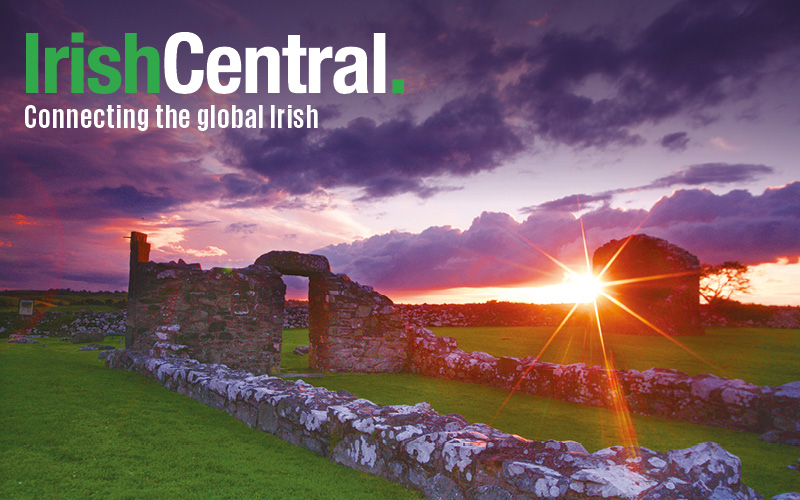As more and more learners are becoming fluent speakers of the Irish language, the physical communities where Irish has always been spoken are suffering the incursion of English by vacationers and new residents who think the Gaeltacht is pretty, and Gaeilge something the natives better stop using when the lordling English speaker is in the vicinity.
People participating in the Irish language renaissance are counter-acting this English language invasion with new communities, and proposals for new communities across the country (ar fud na tíre) so that the Gaeltachtaí don't have to go saving Ireland's cultural heritage and identity alone.
Concubhar Ó Liatháin writes--here--in the Irish Times, about work being undertaken right now to co-opt for Irish-speakers, the Ghost Estates that were abandonded by developers and banksters all over the island in the wake of the Celtic Tiger.
The Irish government is slated to assume ownership of these estates, such as the one pictured to the right at Abhainn Glas, in Meathas Troim (Edgeworthstown), Co Longfort. Turning these empty clustered houses into mini-communities of Irish-speakers is a vision being termed “Eastát na Sí," the Irish for Ghost Estate.
Irish people favor the promotion of Irish language, and new studies, such as the one put out by Blackhall Press entitled Capitalising on Culture, Competing on Difference: Innovation, Learning and Sense of Place in a Globalising Ireland--available here--show how Ireland's uniqueness, which is to say its native heritage, is a key factor in fostering the psychological conditions that underpin successful societies anchored in a rich identity, such as Ireland has in abundance if exploited properly.
The term is "cultural capital," which posits that a sense of place and national identity are in fact valuable resources that motivate a society and help it to function as a healthy community.
Turning Ghost Estates into Estát na Sí for Irish speakers would augment a number of important advances the Irish language renaissance has made in the past decades.
One is the formation of successfully thriving new but unrecognized Gaeltachtaí in places like Cork and Belfast. The Gaeltacht quarter in Belfast has expanded to encompass as many as 20,000 people who are served by many institutions including a 24 hour Irish language radio station--Raidió Fáilte--you can listen-to on-line here.
Belfast is a city of seven quarters, one of which is called the Gaeltacht Quarter, and is supported by a new corporation to oversee its development called An Cheathrú Gaeltachta Teo. The community is defined as a corridor connecting Belfast City Centre to Andersonstown, and it is one of the most exciting urban cultural movements happening in Ireland today. It is augmented by an older Gaeltacht that was founded in Belfast in 1969 when five families built their houses together in a new development on Shaw's Road or Bóthar Seoighe in West Belfast. The Shaw Gaeltacht has grown by 400% in the past four decades. Carn Tóchair in County Derry is another project being undertaken in the north.
Ballymun is the proposed site for an urban Gaeltacht in Dublin. According to Wikipedia: "In a special report on Nuacht TG4 news on 13 January 2009, it was confirmed that a group in Ballymun, in conjunction with the local branch of Glór na Gael have received planning permission to build 40 homes for people who want to live in an Irish-speaking community in the heart of the city. There are 4 Gaelscoileanna schools and Naíonraí creches in the area, as well as a shop where Irish is spoken."
Ard Barra in Cork is a micro Gaeltacht in Gleann Maghair, occupied by six Irish speaking households on an estate like the one in Longford. Cill Dara or Kildare is home to an Irish speaking community that has grown up around a Gaelscoil there.
In fact the successful building of a Gaelscoil in every county in Ireland is the seed bed for such communities. Children that learn through Irish in school, need to have the opportunity to return home to a community where the language of their learning is spoken, and augmenting Gaelscoil with Gael-estates is the way to give the language physical spaces where it can be used in public without self-consciousness.
What's needed is for the Irish people who do not wish to see their culture obliterated from the earth, to support the people in the Irish language renaissance who are working to ensure Ireland is at least somewhat Irish. That support means pushing politicians to back urban planning visions that foster Irish speaking communities ar fud na tíre. That means if you can't be bothered to learn this mind-blowing language, then do everything you can to pressure politicians to fund Gaeltachtaí and Gaelscoileanna in every county in Ireland so that there is at least one community in every county that speaks Irish normally.




Comments